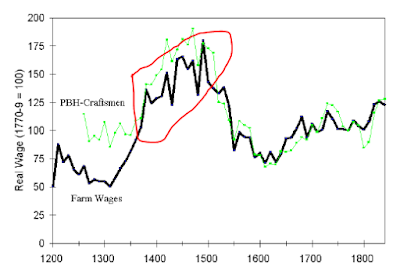Balancing Corporate Profitability with National Interest
The last ten years have been
defined by rapid progresses in technology that have created currencies without
countries (Bitcoins, Ethereum, etc.), a dark market place (silk road), new
banking conduits (payment banks), and startling improvements in productivity
through Artificial Intelligence (AI) and Automation.
It has become then important to
gauge the impact of technology especially on how it re-defines the corporate – government relationship going forward.
As part of the broader social ecosystem, corporates (loosely defined here to
mean productive units) employ labour and use inputs to create an output that
leads to value being created for society at large.
The government is entrusted with creation
of an ecosystem that allows the corporate to exist. It creates roads, power
infrastructure, water & fuel systems, regulation & judiciary, enters
into trade and tax agreements with other nations, creates legal barriers to
protect domestic businesses from foreign competition etc.
On the other hand, the government
also creates regulatory systems to ensure that corporates do not overstep
boundaries in their pursuit of profit. The government takes (or is supposed to
take) an overall view of the nation’s environmental, social, financial,
cultural concerns and also serves the function of managing conflicting
interests between a business entity and the general population. In return for
this management, the government collects tax from its subjects (corporates and non-corporates).
This twin role of the government is
obvious, yet sometimes underappreciated and hence bears mentioning.
A corporate entity’s sole purpose
of coming to existence is to create value for society (and in the process also
enrich itself and its shareholders), and thus there needs to be a constant
vigil on the quantum of value created vs. cost incurred.
Cost incurred by a corporate in
creating its output is easily gauged, and indeed pink papers are filled with
various theories and analyses on them. If a corporate continues to incur costs
in excess of the value it adds, it is reflected in scant profits and cash flow.
Mismanagement of value vs. internal cost is thus not a huge problem as it
usually tends to resolve itself (either by improvement in operations or via
bankruptcy of the corporate).
However, there are societal costs
that are broader and include health hazards of pollution, disruption of life
due to land acquisition, retrenchment of staff, etc. For ease of reference this paper will refer to all such costs as
economic costs, and will exclude the internal costs of the corporate to
produce its output.
Since economic costs are not
reflected in the financial statements of the corporate, it becomes the responsibility
of the government to monitor them. If
the economic costs out-weigh the value added to society, the government usually
steps in. For example, the government taxes ‘sin’ goods (cigarettes, alcohol,
marijuana, gambling etc.) at a higher rate than other goods. Polluting diesel
vehicles may also be taxed at higher rates. Mining companies may be forced to
clean-up after themselves when the mine is exhausted. Chemical producers may be
asked to set up effluent treatment plants to clean up their discharges.
What the government is doing here
is pushing some of the economic costs on
to the books of the corporate to ensure that it does not get profligate in
the chase for profits. A corporate that may find manufacturing a poisonous
chemical very lucrative, may soon realize that the cost of cleaning up the
discharge makes the project nonviable.
As the world moves into a
technology driven era, an economic cost is the cost of unemployment driven by
technology. The reduction in use of manpower can be explicit (i.e. people being
laid off) or hidden (planned future recruitment cancelled or curtailed).
Unemployment may result either by
cost shifting, or by efficiency improvement. Cost shifting
is merely the movement of costs (such as labour) to lower cost destinations
abroad. Efficiency improvement happens when for example, labourers on an
assembly line are replaced by robots. For example, one of India’s leading
automotive companies sold ~1.3m of its output in 1997 with ~23,000 employees,
but in just eighteen years, it required only ~9000 employees to sell ~3.3 million
of units! While some of this labour reduction may be attributed to outsourcing
from smaller vendor-partners, it does give one the idea of the scale difference
technology makes.
Cost shifting is not a major problem for a developing country like
India. Indeed, we should try and capture
a meaningful share of costs shifted by developed nations to augment our
employment levels. It does remain a big concern for developed economies, and
what India should be prepared for is
a blowback from those governments in
the future. Arguably, some of it has already begun from the USA.
Ironically, efficiency improvement is a key concern globally, and more so for
India which has shown its penchant for leapfrogging technologies. It is without
doubt that efficiency improvement does create employment opportunities
elsewhere. However, it should be noted that technology based disruption usually
disrupts a low level activity, and creates opportunity in a higher level
activity. For example, the advent of mechanized
farming, replaced the bullock cart. Another example could be the advent of computer
based word processors which disrupted the typist market in a very short period
of time, but created opportunities in fields like Desktop Publishing, and Programming.
A common thread we observe is
that technology disrupted roles tend to create new opportunities in roles that
require a markedly higher skill than the job they replaced. And as technology
advances, the distance between the skill required for the new opportunity and
the skill of the displaced job, seems to only be widening.
It does not help that the lower level
jobs being replaced are likely employing a staff that does not have the
necessary skill, or motivation, or opportunity to pick up the new skills
needed. Further exacerbating the issue is that the new jobs will likely be fewer
in number than the jobs replaced.
The obvious result is that unless
technological changes are long drawn out, we are facing a potential unemployment/ underemployment issue of unprecedented
proportions. This may also have the impact of increased income disparity, as
those fully employed will continue to draw a higher wage, versus those
supported by government that will get sustenance wages only. This will increase
the burden on society, thus increasing the economic costs of a corporate
looking to add value beyond a point.
In order to prevent social
harmony, the government will have to step in to ensure that the unemployed or
underemployed are well cared for. This assistance can come either through direct assistance such as unemployment
dole, or indirect assistance as
government bearing medical expenses, schooling expenses, subsidizing re-skilling
workshops, cost of policing (to
prevent social unrest) etc.
Since businesses ultimately cater
to society, at some point lower employment will likely impact demand for the
output of corporate entities as well! However, this will take some time to
manifest, and it is exactly for this reason that it the government which will
need to gauge the impact, as the corporate at an early stage will be blind to
it. The corporate will quite happily pay the tax on the increased income, as
the absolute gains of efficiency will more than outweigh any tax on gains (like
Income tax).
Therefore, a country will benefit
from cost cutting only till the benefit the national exchequer receives from
the increased corporate profitability and other ancillary benefits (such as
lower wastage, lower pollution etc.) is equal to or greater than the national
burden it has to bear for supporting the unemployed populace. This would be the,
what I call as, “economic cost
indifference point” for the country. Beyond
this point, the corporates are merely transferring their cost to the country’s
coffers, and there has in fact been no efficiency improvement for the economic ecosystem
as a whole.
The computation of this, Economic
cost indifference point, would be simply this, corporates can continue to cut
costs to the point that:
Benefits to the economy due to efficiency are greater than, or equal
to, the economic cost to the country
A more detailed version of the
relationship can look something like this:
Additional income
due to efficiency * tax rate + other related levies + reduction in wastage of
national resources + energy/environmental savings etc.
>=
Workers displaced
* non-employment probability * direct/ indirect unemployment dole per head + (people
entering employment age * non-employment probability * direct/indirect unemployment
dole per head) +social costs of policing/ counseling etc.
In practical terms, this would mean that the government makes clear
through law what level of fiscal deficit (as % of GDP) it is prepared to bear
every year. Empirically, this level would lie somewhere between 2.5-4.0%. This
is the leeway that the government is giving corporates for the enlightened
expansion of efficiency. This would include
the “reduction in wastage of national resources etc.” portion of the formula mentioned
earlier.
Of excess fiscal slippage, the
government should identify the portion related to the transfer of costs by
corporates to the economy at large, and transfer it entirely upon the
corporates as economic cost taxation. Basically,
cut the slack given to corporates.
Such a transfer of costs will
sharply bring down the profit growth of the corporate and make it re-evaluate
any proposals by taking the full economic costs of its decision into
consideration. Ultimately, by protecting the buying power of the economy at
large, this would make businesses more sustainable in the long run as well.
As a lifelong believer in free market economics and an advocate of
smaller government, I am surprised that I should be writing this. But faced
with the unprecedented disruption that AI and automation portend, I believe
that economic cost taxation is what an honest market economist would do.
A free market economy is where
prices are determined by the unrestricted competition between non-government business
entities. However, a truly free market will happen when consumers are able to
evaluate the costs of their decisions with as much information as possible. The
current demand v. supply driven price determination, only takes into account
the costs incurred by the corporate internally whilst completely ignoring the
cost paid by the society at large. While decline in prices due to efficient
methods of production are welcome (they reduce the environmental burden),
decline caused by replacement of labour (as AI, automation, cost shifting seem
to be able to do), is only an apparent decline due to the hiding of true
economic cost. A cost the consumer ultimately pays through higher taxes (to
fund the fiscal deficit), lower social amenities, higher interest rates,
vulnerability of the economy to external shocks.
Note this is a re-presented version of my original work here: https://megadodopublication.blogspot.com/2015/07/economics-balancing-corporate.html



Comments
Post a Comment